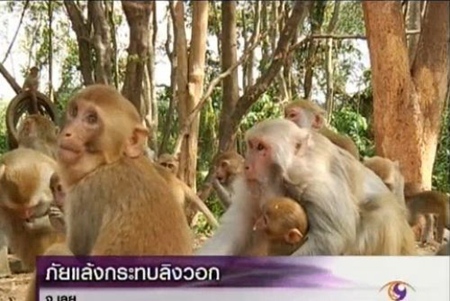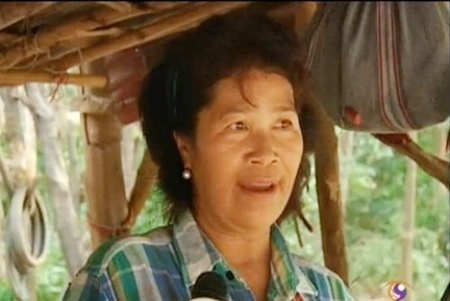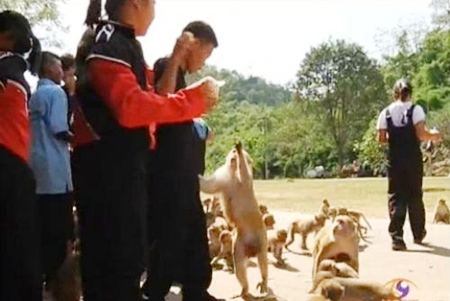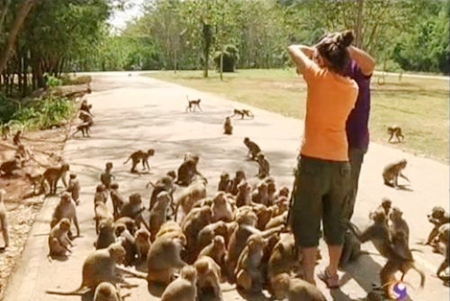Native to areas in South, Central and Southeast Asia, troops of Macaca Mulatta otherwise known as the Rhesus Macaque inhabit a variety of habitats from grasslands to arid and forested areas. Occupying areas that are very close to human settlements, a troop of over one thousand Rhesus Macaques currently live on the hillsides of Loei’s Wang-Sapoong district.
With the growing population of these monkeys, beginning from an estimated 142 to over one thousand today, they are struggling to find an adequate supply of food to eat. Depending increasingly on treats such as corn chunks, nuts, or bananas given by tourists, these animals are facing an extremely challenging task to maintain a natural lifestyle of their own.

Regarded by locals as the only standing troop of the Macaca Mulatta breeding in Thailand, the infants are mixtures of Rhesus Macaques and the Pig-tailed Macaques – which exhibit slightly different skin and hair attributes.

“It’s very strange because the troop of Rhesus Macaques rarely come down to find food on Buddhist days… Actually they don’t come at all, even if we call them. So we call them “Ling Jum Sin”, a term which is used to describe when monks do not leave temple premises,” said Sathien Sooksomboon, a local villager.

“The rhesus macaque mainly eat fruits, but there is not so great a selection left in the wild… some trees are destroyed… so there’s about 3-4 main trees on the mountain where they stay. They will find it particularly hard during the dry season, when there will be hardly any food at all. If they go down to find food in the farmer’s plantations, they may get shot,” said Phra Kasem Thituthitano, acting abbot of Tam Phra Mak Hor Temple.

Besides efforts to plant trees and to ensure that the environment becomes healthier, the troops of macaques still rely primarily on the fruits and foods fed by the tourists. The area is also located near a limestone cave; however, there has been very little maintenance. So with just about 20 to 30 tourists visiting the area on a daily basis, many stomachs will have to go to bed feeling rather peckish!





